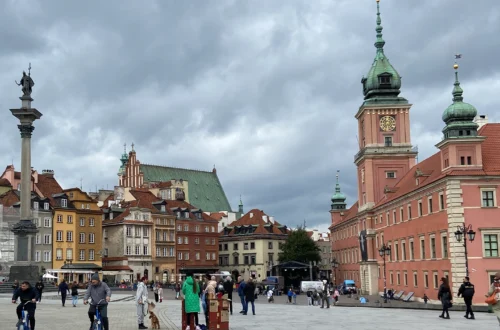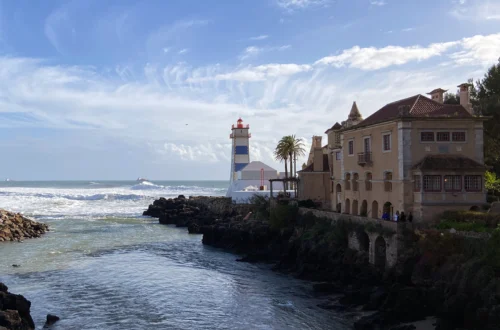
Northern Spain – Visit Asturias
At this point I’m considering travelling during shoulder season for most European countries. Fewer people, less expensive, but still just as beautiful. This year I went to visit Asturias, a coastal region in Northern Spain. I stayed in the town Oviedo, but spent most of time exploring the countryside. Asturias and the Costa Verde blew me away with their natural beauty.
This post contains affiliate links to things like tours and hotels. These help me earn a small commission at no additional charge to you. Every affiliate link is marked with a *.
Why visit Asturias?
Honestly, there were two reasons I decided to visit Asturias: A friend of mine lived there and a budget airline started operating direct flights.
During my week there the maritime climate presented itself from its best side, with highs up to 20° and lows no lower than 7° Celsius, with only a few light rain showers during the entire week. Late autumn to early spring are the off-season in northern Spain, but in my opinion, it’s so pleasant. Not too hot, not too cold, not too wet, not too dry. And most importantly: Not too many people.
Now that I have been there I can add to my reasons: The food is great and affordable, the nature is beautiful and there is so much history to discover.
Overview of visiting Asturias
- Where to stay while visiting Asturias
- Where to go and what to do
- Day trip to Galicia
- Asturian Food
- Map of where to do what in Asturias
Where to stay while visiting Asturias
You have several options with good connections, restaurants, things to do where to stay in Asturias: Aviles, Gijon and Oviedo.
In Aviles you have the modern-ish, affordable Oca Villa De Aviles* with breakfast included. Or if you prefer an apartment to a hotel San Bernardo, 19* is your best choice in either of the three cities.
If you are looking for true traditional Spanish hotel hospitality and vintage interior that won’t break the bank you can go to Hotel Hernán Cortés* in Gijon. If that maximalism interior is not your style and you prefer clean lines and empty walls over stone walls, wallpaper and over the top decoration choose El Môderne Hotel* instead. As the name suggests it’s incredibly modern.
In Oviedo you have the AC Hotel Oviedo Forum* just a short walk away from the train station. It is operated by Marriott, but goes for an okay price. Another choice is Barceló Oviedo Cervantes*, also in a central location. The old hotel is located between two incredibly modern glass and steel buildings, has modern interior and beautiful decorations in the common areas.
How to get around Asturias
While there are great train connections between the major cities listed above (you can find them here on Renfe‘s website) and well thought out bus routes by Alsa, the easiest option is to go by car.
Many of the nature spots you can discover, as well as anything that isn’t close to any of the listed cites is some ways away from any train or bus station (with the exception of Perlora) and except you are willing to hike several kilometres to see them you are better off going by car. If you are there for a week you can plan your stay so that you’ll only need the car for three to four days.
Where to go and what to do in Asturias
Ovideo
Oviedo, the capital of Asturias, has a rich history that dates back to prehistoric times when people first settled there for its fertile land and access to water resources. It was also an important Roman outpost since it was located on a highly frequented trade route from Italy to northern Europe. The Roman history of the city can still be seen in the remnants of an aqueduct which was used thousands of years ago to supply the city with fresh water from the mountains.
Today the town is a mix of old Spanish houses, utilitarian architecture and modern prefab high rises, which makes for a pretty interesting cityscape. As a catholic stronghold (unoccupied even during the days of occupation by the Moors from 711 AD until ~15th century) Oviedo has several churches, a cathedral and a basilica in the town. The city is also full of statues, with the style ranging from cartoon characters to real people to abstract art.



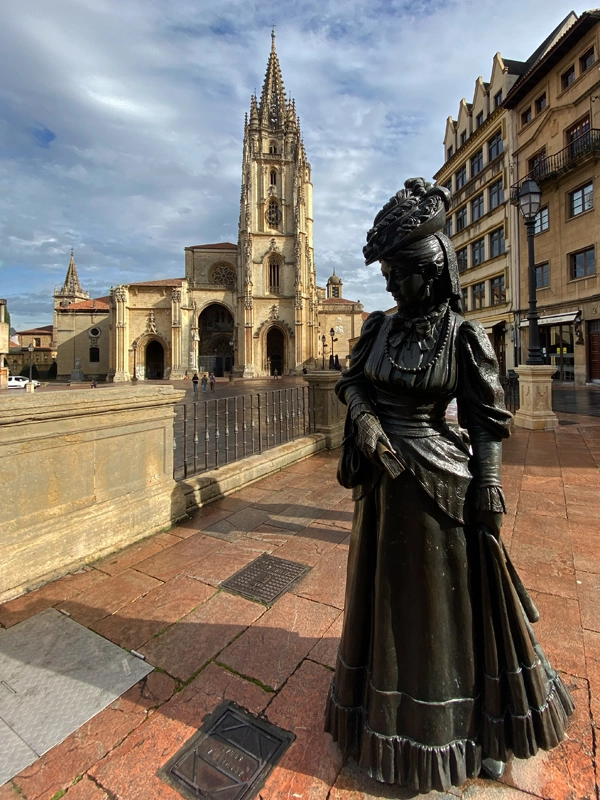
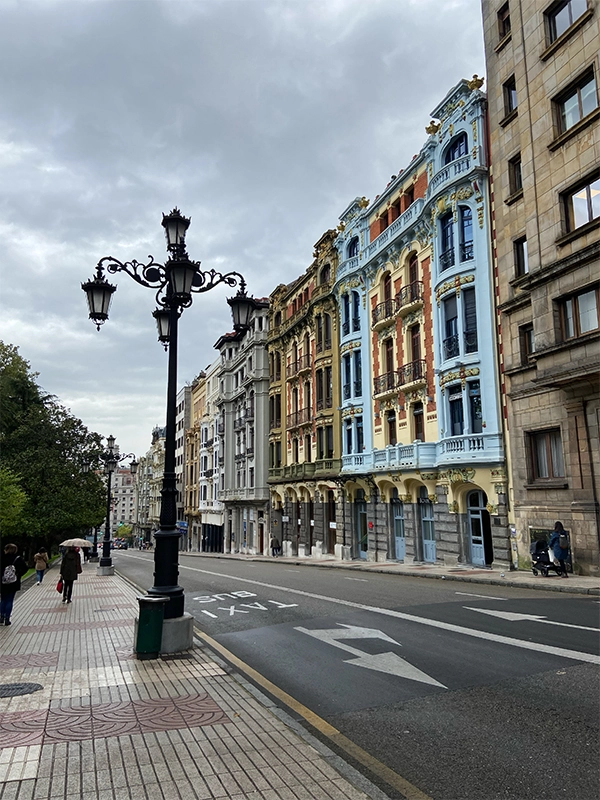

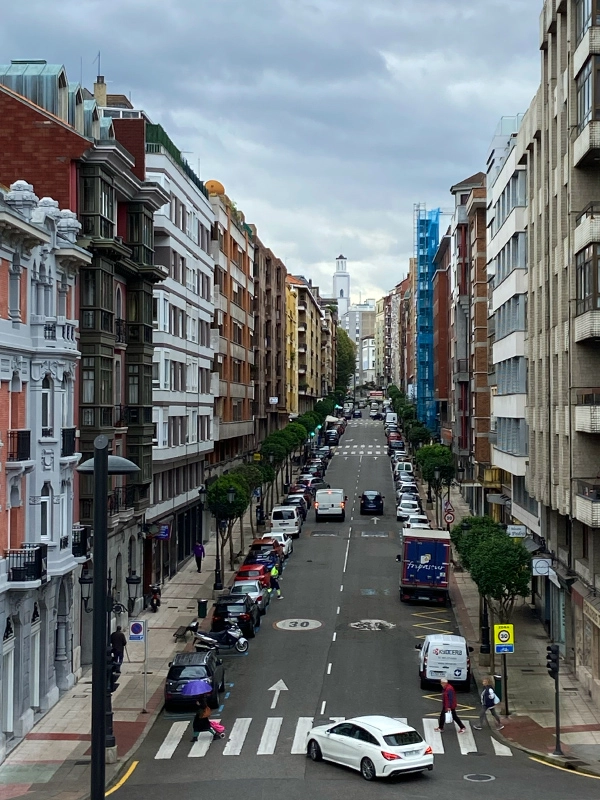
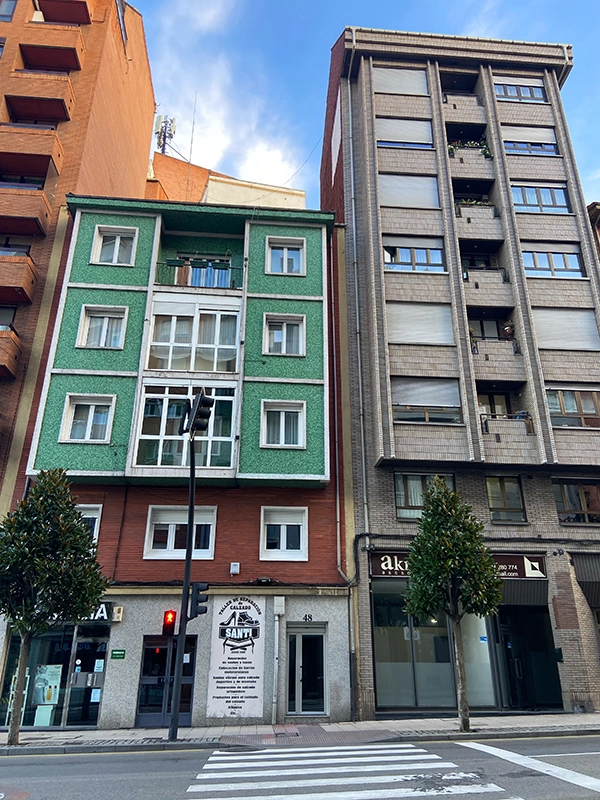
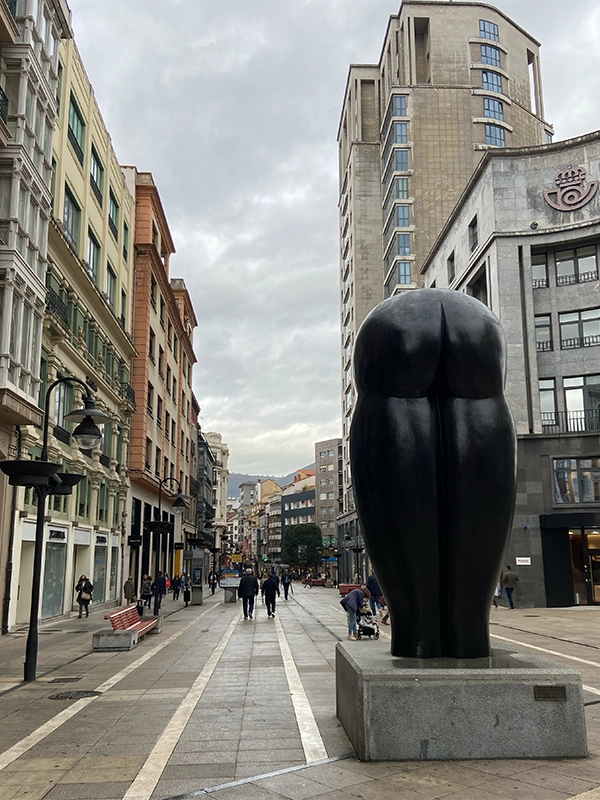
At night (because in Spain everything happens hours later than it would in Germany) the city wakes up and the walking streets fill with people. One evening we went to a small booth near San Francisco Park called Churrería Esmeralda and had churros with hot chocolate dip. There are several churro food trucks in the city, but most of them had an unpleasant old-frying-fat-smell about them. Let your nose guide you and you’ll find a good one.
Although art museums aren’t usually on my list I did visit the Museum of Fine Arts of Asturias, which is free and much, much bigger than you think. There is a modern building, an only building and a very old building, which are all connected. The most prestigious paintings they have are a Picasso and a Dalí, but I have to admit I was much more impressed with the nature paintings.
My favourite breakfast place in Oviedo was café LIRA. They serve great sandwiches and strong coffee at prices you just can’t beat. The two of us paid 7€ for two coffees with milk and sandwiches.
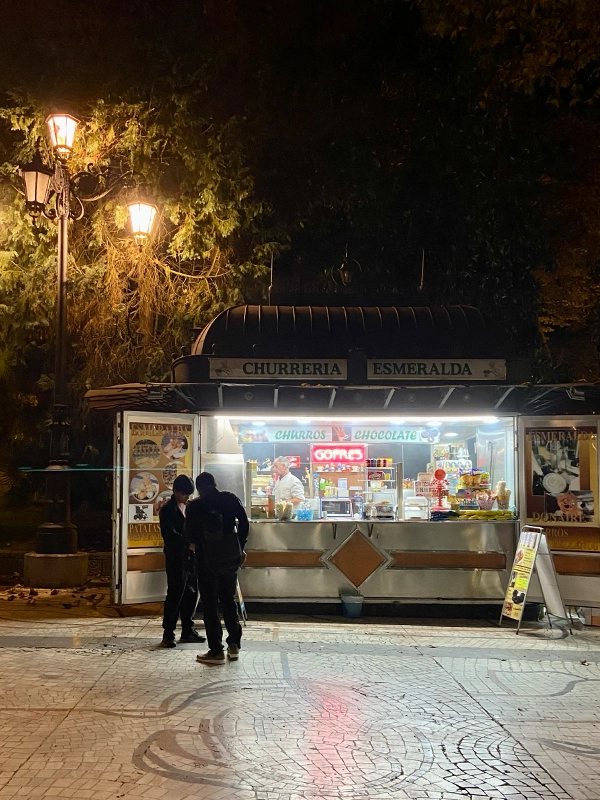


National Park Picos de Europa
Picos de Europa is Spain’s only inhabited nature reserve and also an UNESCO Biosphere Reserve. The park is an extension of the Covadonga National Park, which was established in 1918. The Covadonga National Park was the first national park in Spain.
On the way from Oviedo to the national park Picos de Europa, you can stop by the capital of the municipality Cangas de Onís (which is also called Cangas de Onís) where you can see an ancient roman bridge which is still functional today as a footbridge. We did stop there (I took the title picture while standing on the aforementioned bridge), but they had put up a nativity scene Christmas light display so I didn’t bother taking a picture.
Basílica de Santa María la Real de Covadonga
With its location already in the Picos de Europa mountain range, the Basílica de Santa María la Real de Covadonga was another great stop on our trip. For Catholics, the Basilica together with the cave “Santa Cueva de Nuestra Señora de Covadonga” are an essential part of the Way of St. James pilgrimage. For locals who aren’t catholic, this is the “pink church” as it’s made entirely of pink limestone. It towers at an impressive height at the edge of a mountain, with its catacombs built into the mountainside. Underneath the cave are a waterfall (if there is enough water) and a glacial freshwater well. It is said that drinking in a specific way from the well will cause you to get married in the next year.
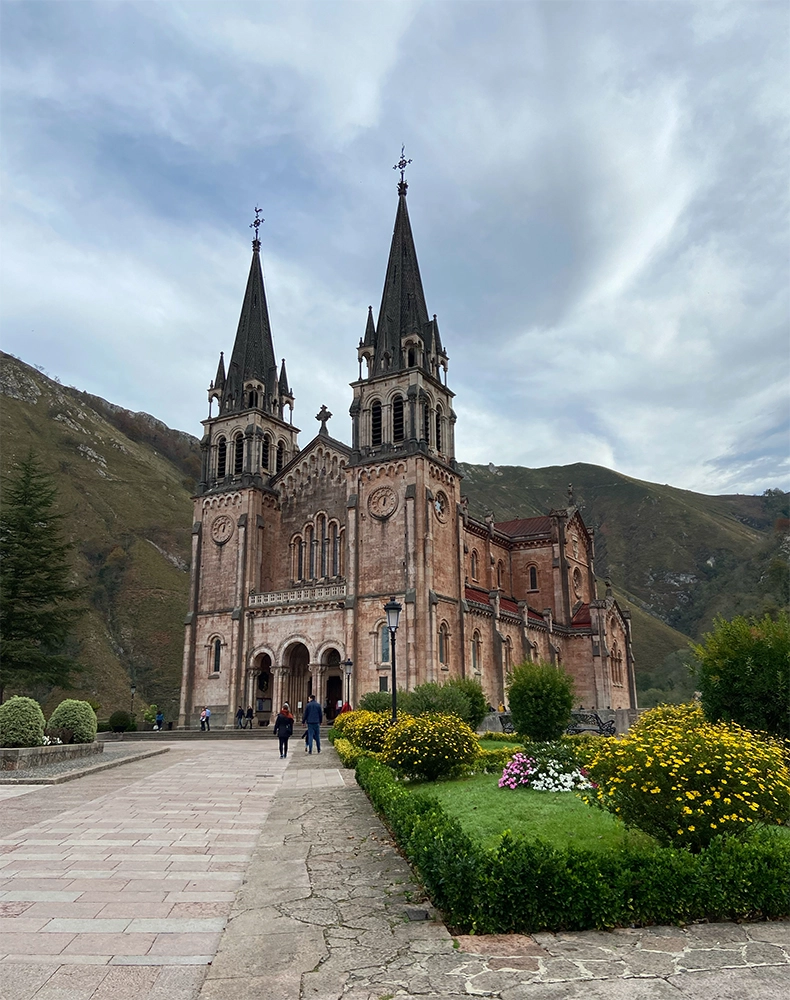
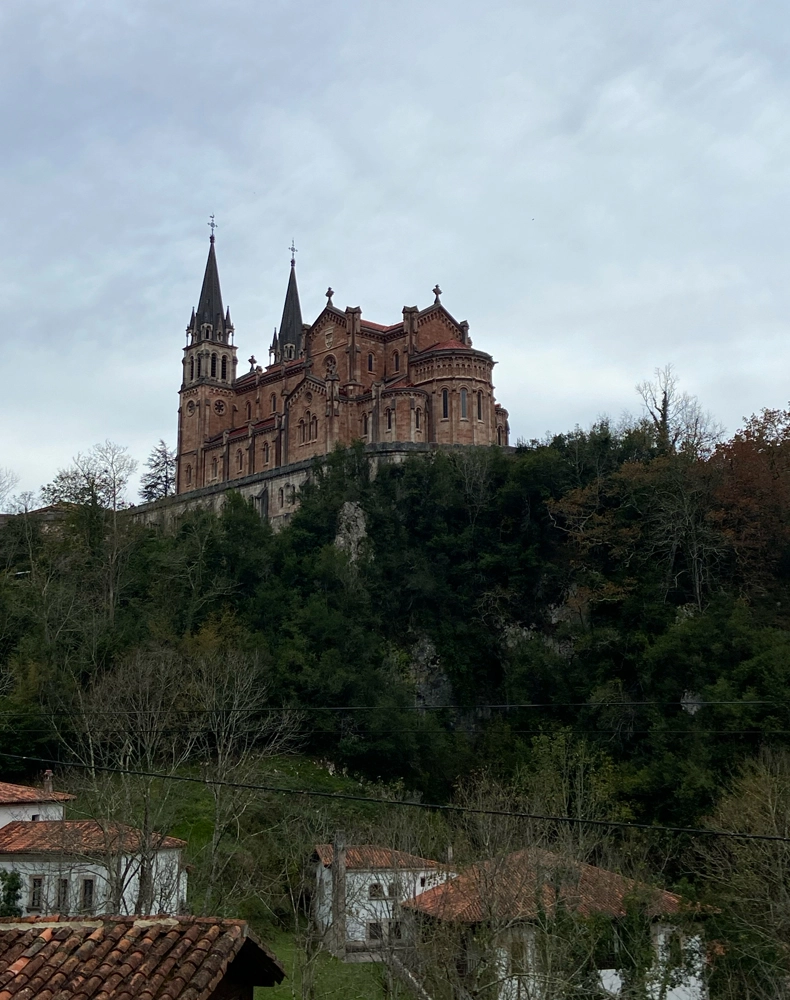
Mirador de La Reina
Located halfway up the mountains between the basilica and the two lakes of Covadonga is the viewpoint “de la Reina” (of the Queen). At a height of roughly 900m above sea level, you can see the northern parts of the Picos de Europa mountain range, the river valley of the Güeña, as well as the Cantabrian coast when the sky is clear. It’s a beautiful spot for a picnic with a hand full or picnic tables and parking.
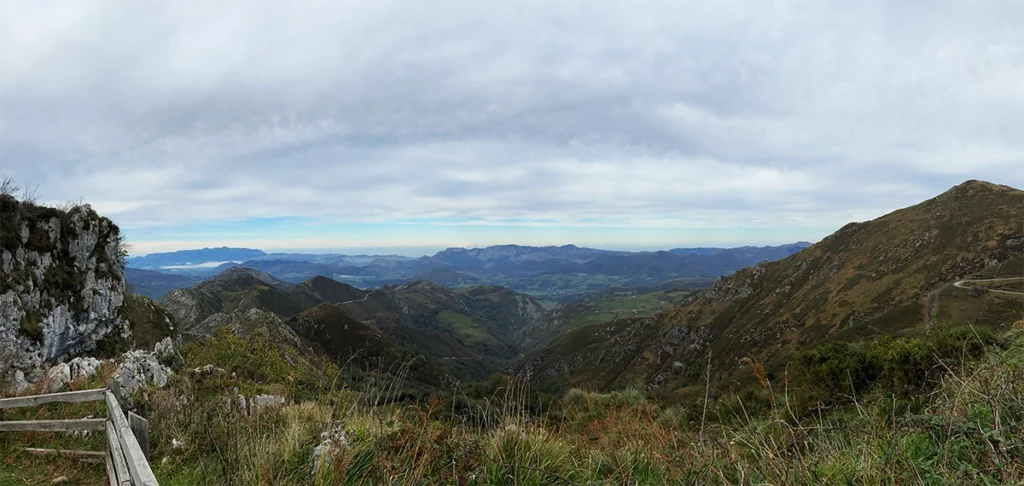
Mirador de Entrelagos
Mirador de Entrelagos translates to “viewpoint between lakes”, which can be taken literally as it overlooks the two glacial lakes Ercina and Enol, the “lakes of Covadonga”, which are located in the original centre of the national park. The road leading up the mountain is pretty slim and steep at some points, with lots of blind spots in curves and barely existing safety measures. If you fear heights, this road might not be one for you. Once you reach the parking spot there’s a fence with a sign that says “don’t bother the wild animals”, otherwise you are free to roam around and explore the breathtaking nature. The highest point we reached above the lake was at 1160m elevation, with a great view and strong winds.

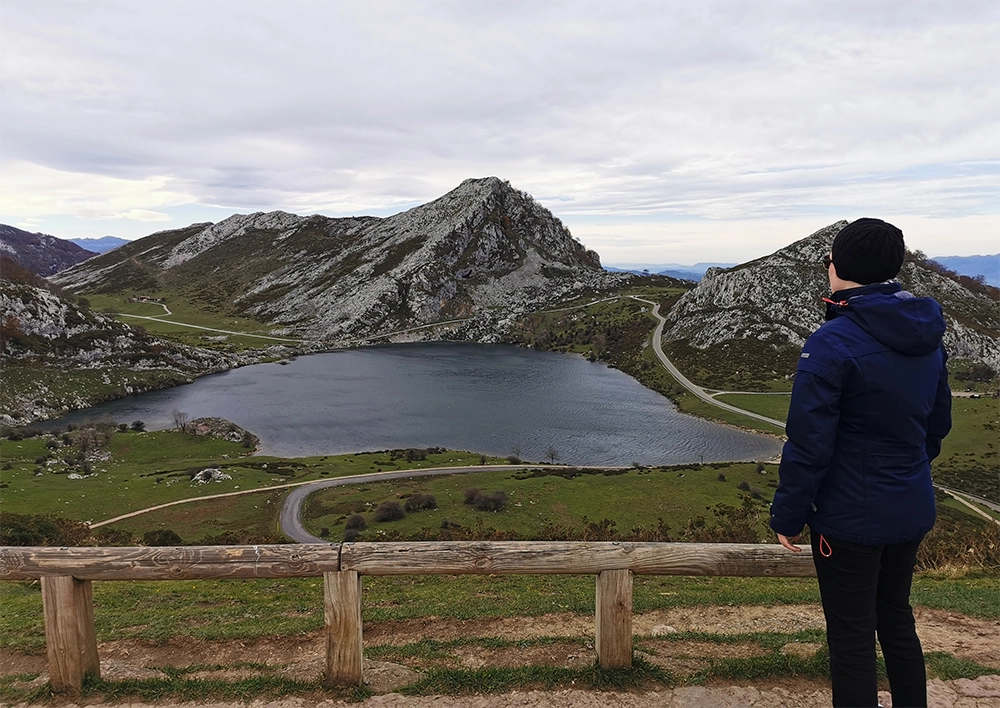
Visiting Asturias – East Coast
The east coast of Asturias, better known as Costa Verde, is a place of contrast and beauty, where the rough sea meets the mountains and the sun sets over the horizon where the rain clouds gather. The coast is characterized by its many cliffs, some of which make for a breathtaking picture from the viewpoints we visited along the way.
Bufones de Pría
Near the coast town of llamas de Pría you can find the geysers of Pría, which are a natural phenomenon caused by erosion of the cliffs and the water of the sea crashing into the cliffside in giant waves, then being forced out into the open through holes in the limestone.
Although the way to the geysers has to be taken by foot from a parking spot about 2km away from the coastline it is well worth it when you see the spectacle, especially on a day with strong winds and a rough sea.
For reference see the video and turn up your volume.
There isn’t a guarantee to see the spectacle happening, but your best shot is going on a windy day in autumn or winter at high tide.
Mirador de La Boriza
The viewpoint “La Boriza” was our eastmost stop during this day trip. At the viewing point, there isn’t much else to see except for a concrete tower, but the view is breathtaking. The parking spot is right near the edge of a cliff, from where you walk about 300m. From there you have a panoramic view over the sea, two beaches and the mountains in the background.
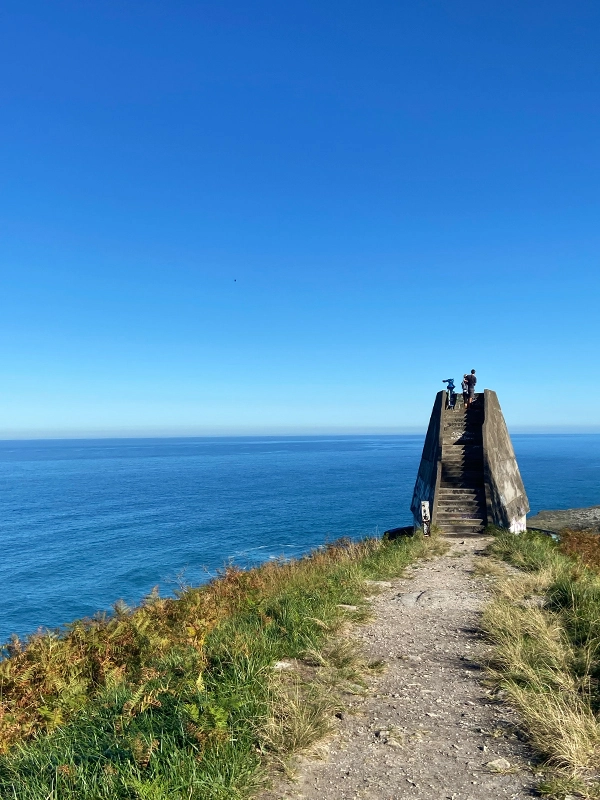

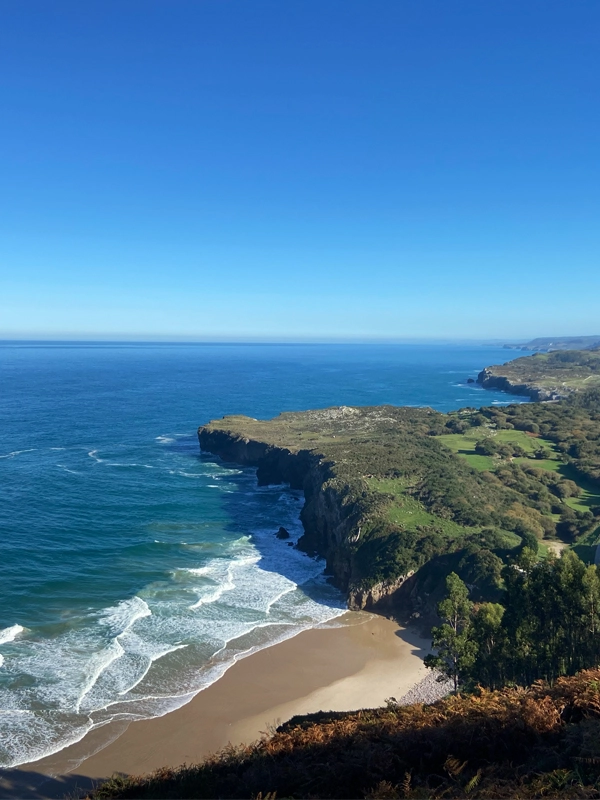
Sablera de La Canalina
To make and have our coffee and snacks we stopped in the middle of nowhere on the coast. This was not an official viewpoint (as far as I know), so it was just us there.
From the edge of the cliff, you can see a stone arch in the ocean and to the right a small beach inside a ravine between two cliffs. When the tide is low you can even walk down stone steps hewn into the cliff to the sand. When we got there the tide was quite high already so I didn’t risk it.
In Spain, they trust that people have common sense. There are no fences or guards, no signs warning of dangers and at the beaches no flags indicating the state of the water. And honestly, being in nature feels so much more serene when there aren’t safety measures obstructing everywhere.
Cuevona de Cuevas del Agua
On our way back we went through the Cuevona de Cuevas del Agua, a 250m – 300m long road through a natural cave through a mountain. It was formed by the river Cueva thousands of years ago and is still the only access for vehicles to the town of Cuevas.

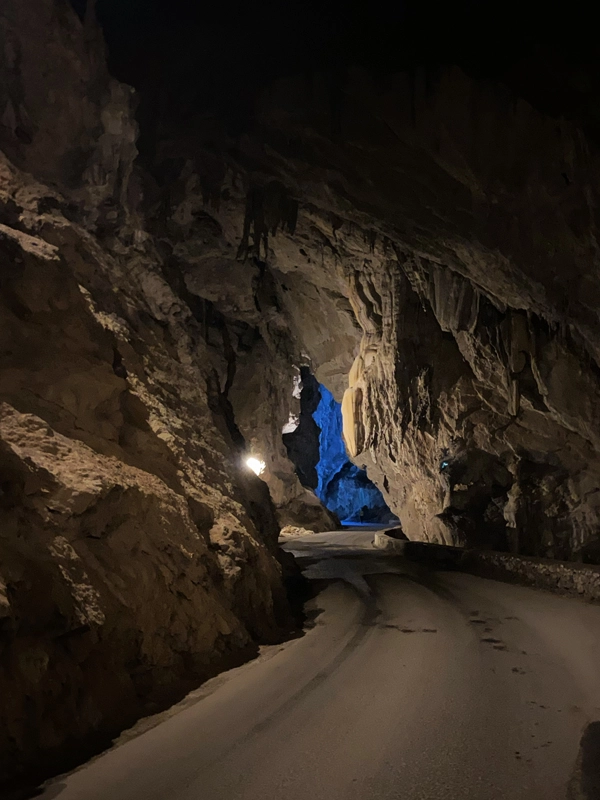
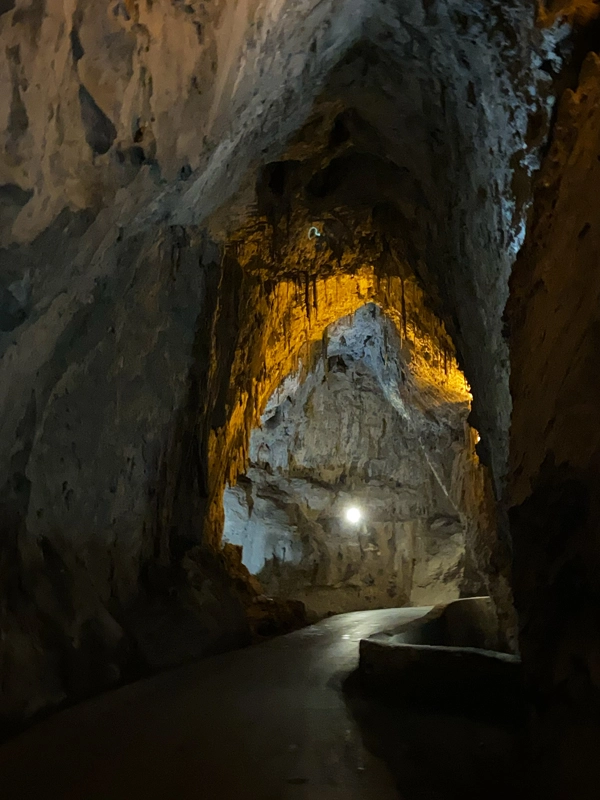
Lighthouse Lastres
The last stop of the day was the Lighthouse of Lastres, during sunset. While it is not the highest or prettiest or most spectacular lighthouse I have ever seen, the view from the cliffs is still spectacular and the sunset made it look dreamy.
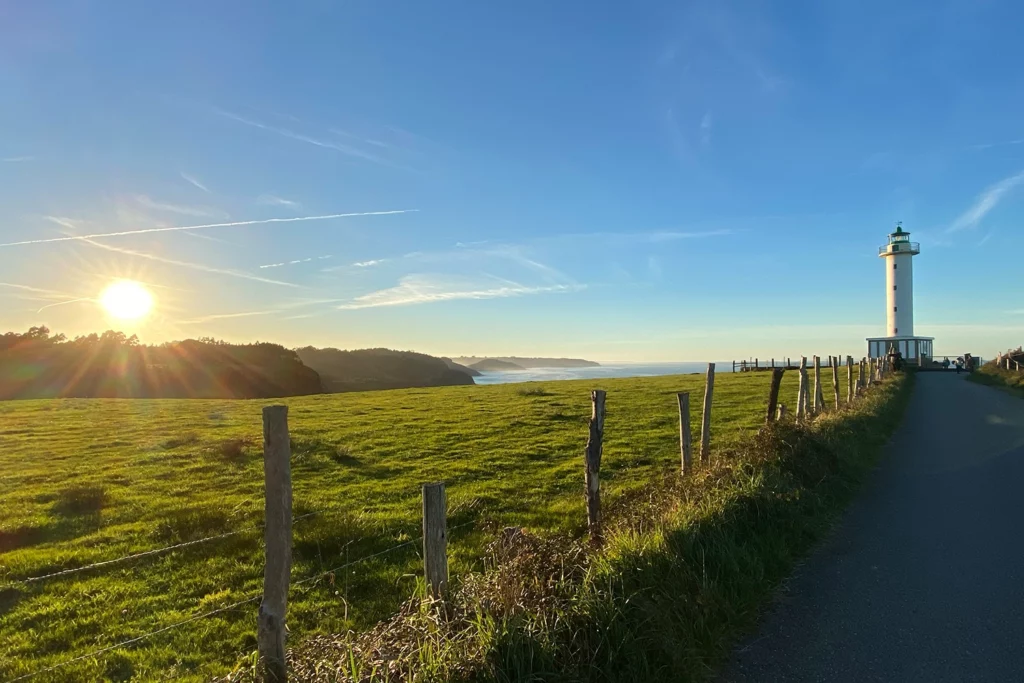
Gijón
Even though I was in Asturias for a whole week I only saw Gijón at night. On the last day, we had the car some people invited us to an international trivia night at a bar in Gijón. Being from Germany and Malaysia respectively we thought it would be a good idea to go. We picked up two Bangladeshis and drove to Gijón. Once we had finally found a parking spot and had walked to the bar it was absolutely packed, people were even sharing seats. So we decided to grab something to eat instead at a cheap, but good burger place called Burguer Chopper. One cheeseburger with bacon was only 3,60€!
One of the sights in Gijón is the “Árbol de la Sidra”, a statue resembling a tree, made out of Sider bottles.
Afterwards, we went to a fancy bar called Varsovia where the cocktails were a bit more expensive but very good. And I’d rather go to a fancy place and pay a little bit more for a great atmosphere and great-tasting drinks than get a shot for a Euro.
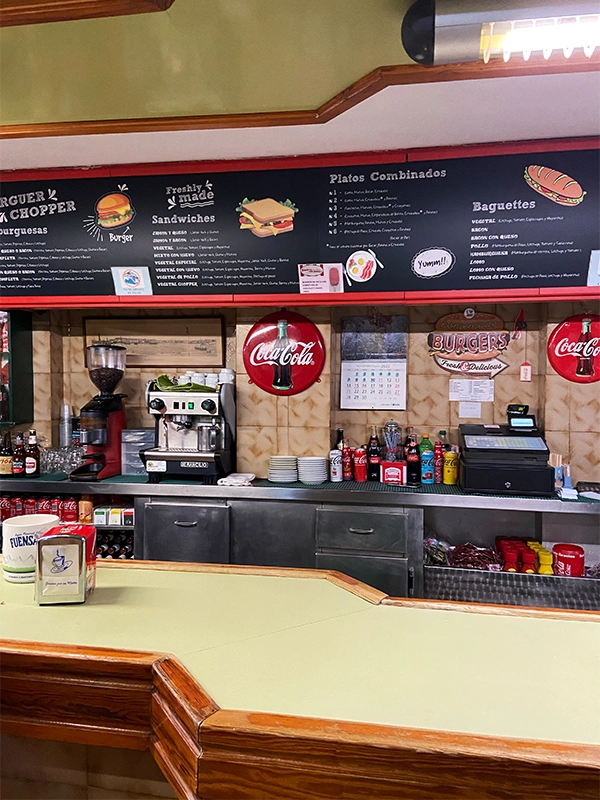
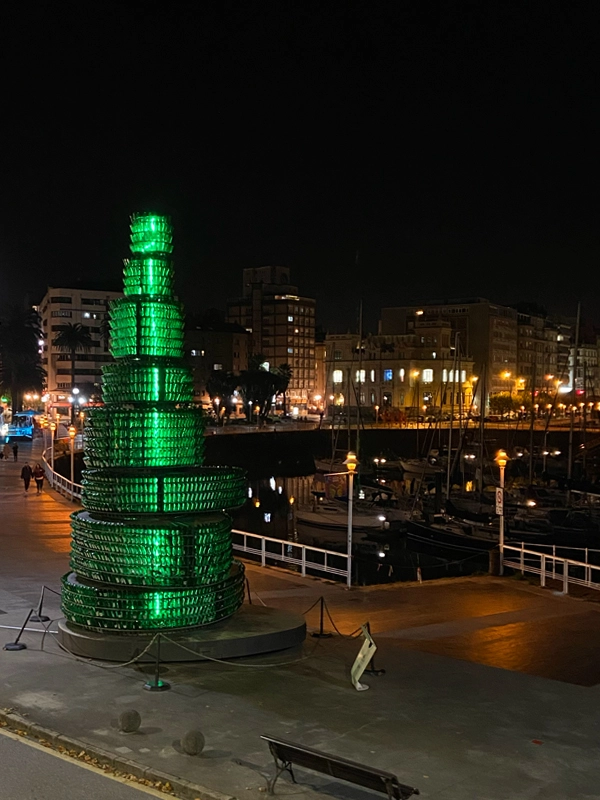

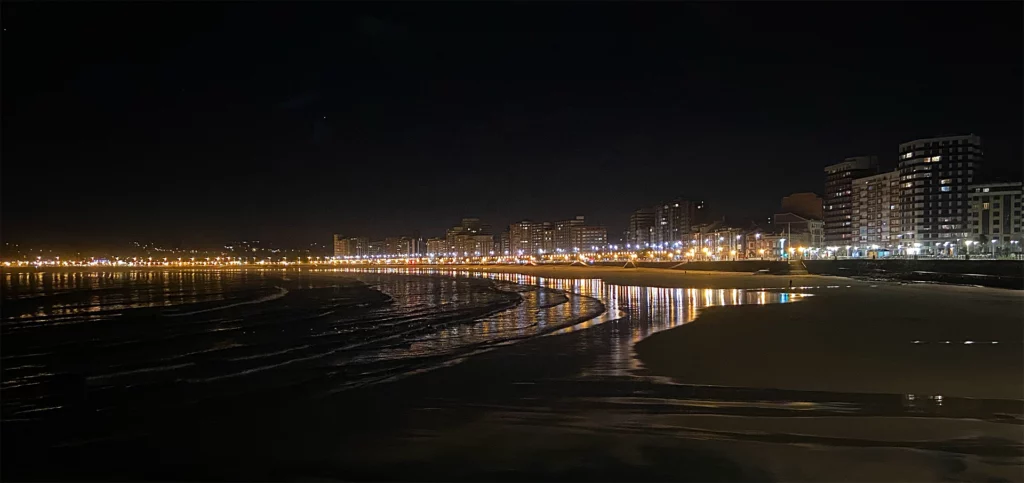
Visiting Asturias – West Coast
The west coast of Asturias is also part of the Costa Verde, along the gulf of Biscay. My definition of the east coast and west coast in this article is simple: is it east or west of Gijón? So here is what you can do west of Gijón when you visit Asturias:
Cudillero
Cudillero is supposed to be Spain’s prettiest village. I cannot speak for the rest of the country as I have only seen parts of Asturias and Galicia, but it is a very cute fishing village. The houses are colourful, the people friendly and the viewpoints in the perfect spots to give a panoramic view over the village, its port and the lighthouse, before the horizon where sea and sky meet. In the old town centre, you can find a hand full of restaurants and cafés and this is the only time I will advise against going by the Google reviews, as the Café we were at had 2,2 stars, but the coffee con leche and toasted sourdough bread with tomato spread, olive oil and local ham were great and for a good price as well (15€ for three of us).
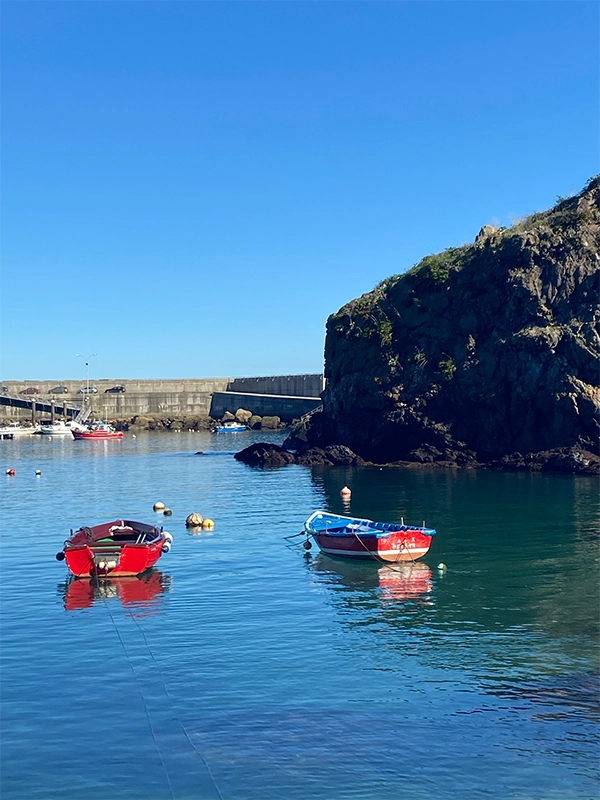
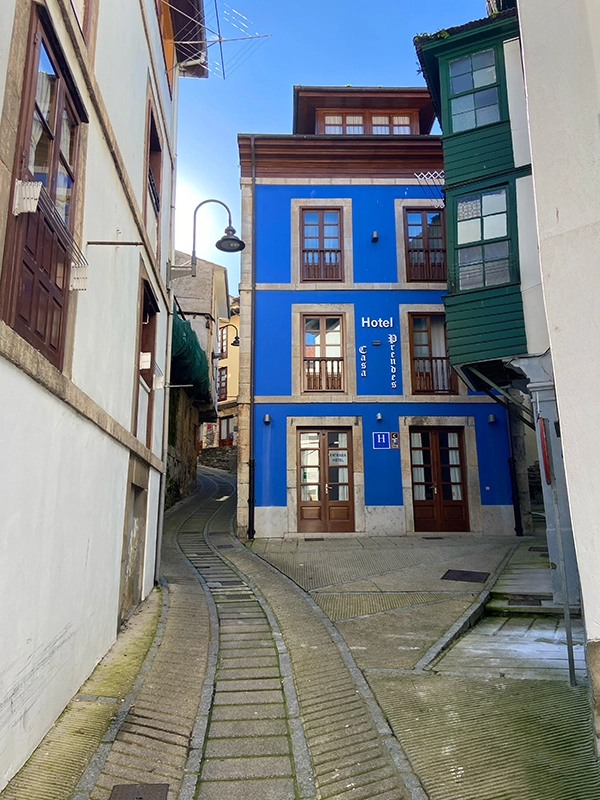
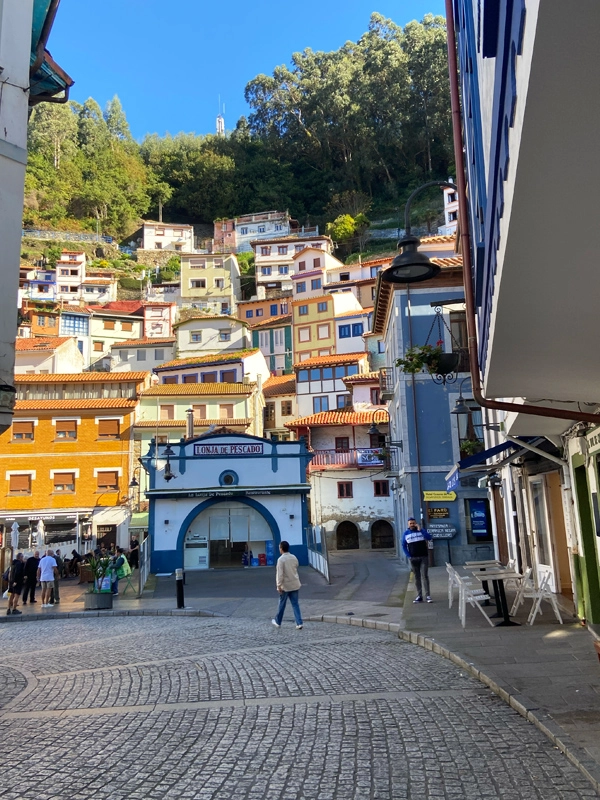

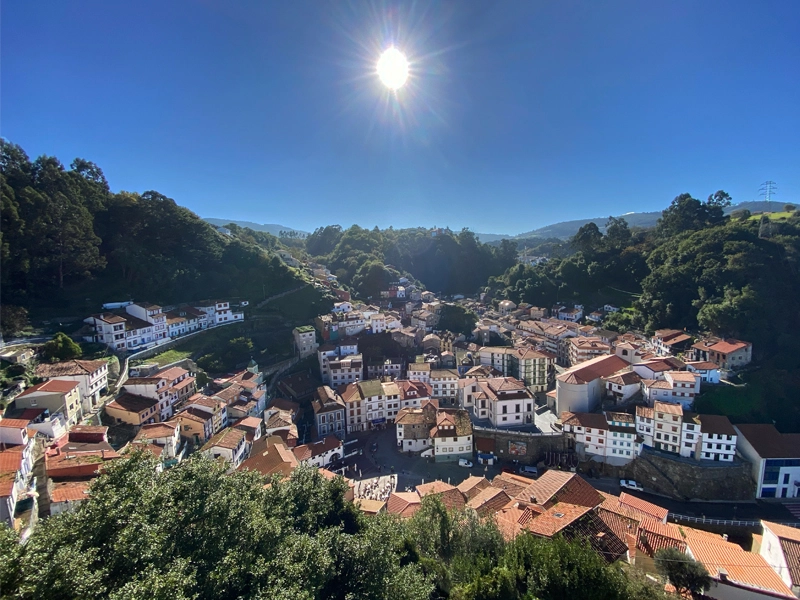
Ermita de La Regalina (Cadavedo)
The “Hermitage of Regalina” is a place of religious significance to the region and one of the most beautiful viewing spots on the east coast of Asturias. Build in 1931 as a place of pilgrimage to honour the patron saint of Cadavedo, the Virgin of Riégala, affectionately called “la Regalina”, it was recently refurbished when the Spanish king, queen and princess visited the site in 2022.
Next to the hermitage is a viewpoint from which you get a spectacular view of the Cantabrian coast (the province east of Asturias)


Coastal path of Artedo
The wandering path “Senda litoral de Artedo” leads through a forest-swamp area over wooden bridges and walkways to a secluded beach called Concha de Artedo. Concha means shell and it fits the shape of the beach perfectly. In the high season, it is a much-visited beach, but during the shoulder season, you’ll have it to yourself. The way to the parking lot is pretty interesting as well since it leads underneath an old car bridge and its new replacement.

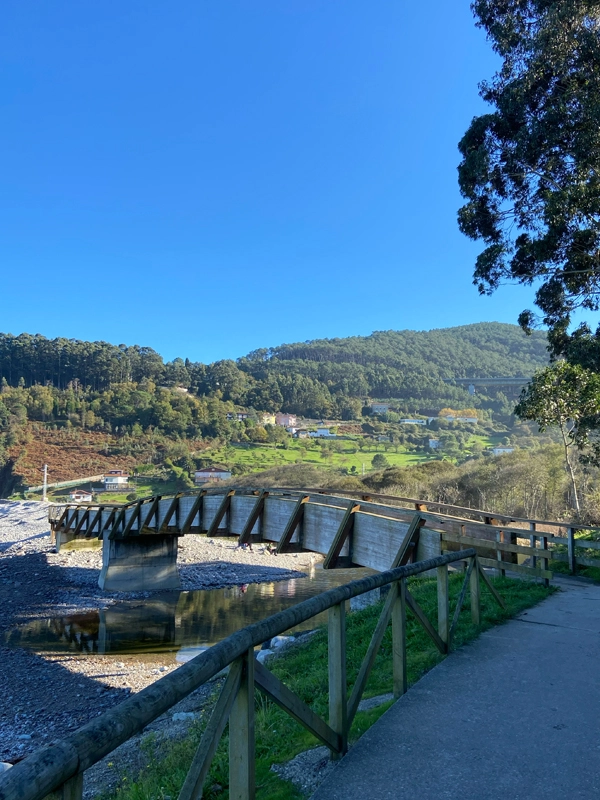
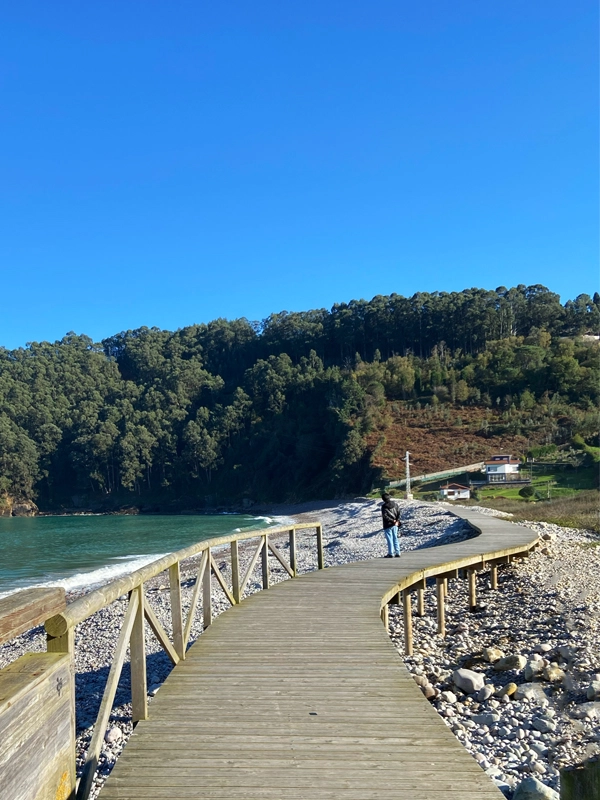
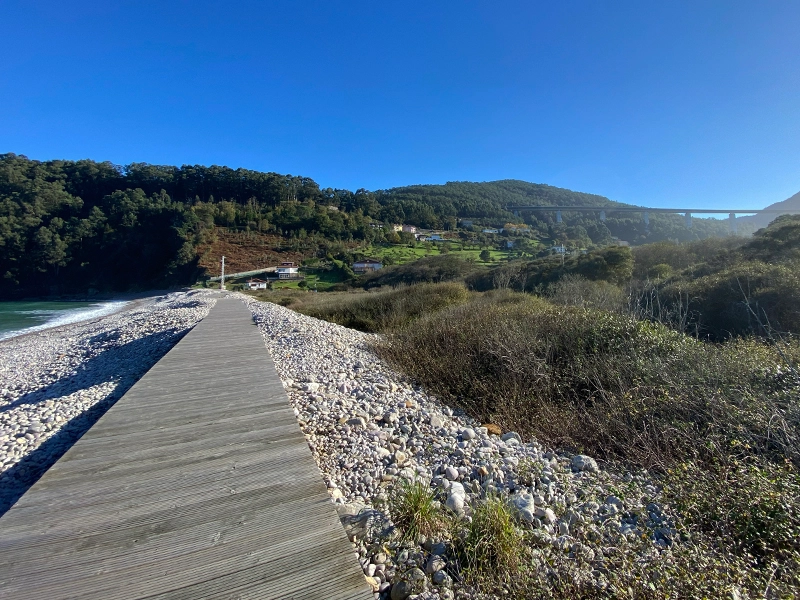
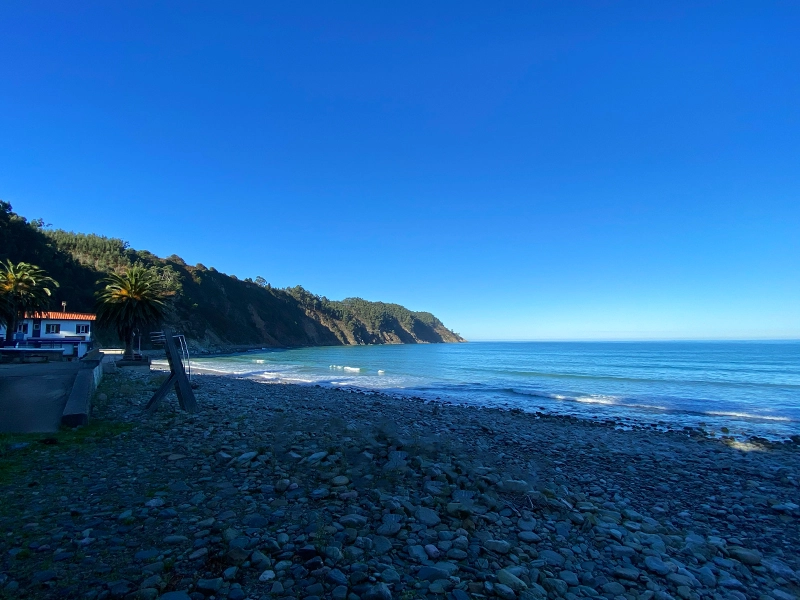
Playa de Silencio
For a beach called “Beach of Silence”, there are a lot more goat noises than you’d expect. But let me explain: halfway down a tight one-way street you’ll stop at a parking space. From there you take a path down to a viewpoint, which I might even call my favourite on this trip. From the viewpoint you have two choices: a set of stairs hewn into the mountain, secured with a railing or a steep, barely visible mud path with no railing, no steps and a lot of nettles and thistles to either side. So of course we took the latter path and ended up in a herd of goats.
The goats were much more interested in the grass than us and once we had made our way by them we got to another viewpoint where the water has worn away at the cliffs long enough to create holes and shape three pillars into the cliffs. One of us got splashed by a wave trying to take the perfect video (no, there is no video of that).
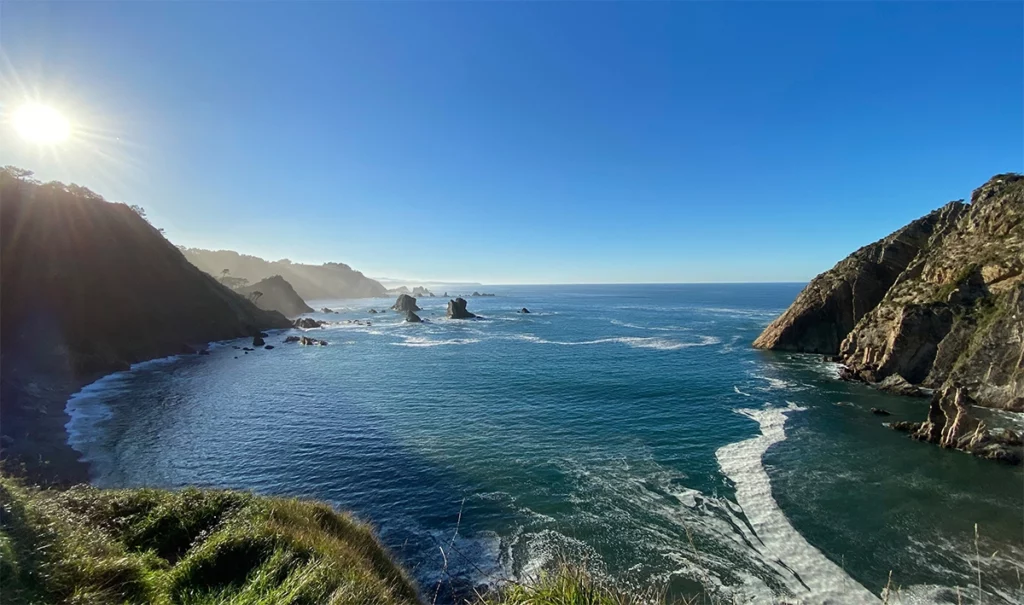
Sidrería Tierra Astur Avilés
Just like with Gijón I only got to see Avilés at night, since it was our stop to get dinner. For dinner, we went to one of the Sidrería Tierra Astur Restaurants which doesn’t only serve a slew of Asturian food, but also the traditional Apple Sider which is made in the region. The way it is poured makes it spray everywhere, so make sure you don’t wear any clothes you need again for the rest of the trip. The food was good as long as you can get over the smell.
If you want to try many different Spanish foods while you visit Asturias any of the Tierra Astur Restaurants are a good choice.


Perlora
When you take the train (or rather trains) from Oviedo to Perlora you will pass by a lot of industry, then exit at an unmanned station near a former vacation village. The “Ciudad Residencial Perlora” was built during the Franco regime which ruled Spain between 1939 and 1975. The village had sports facilities, lots of small vacation homes, a hotel, a mini-golf course, a bowling alley, a community house, a swimming pool and even a church. It is currently owned by the Government of the Principality of Asturias and a large part of the complex remains abandoned awaiting rehabilitation. The doors and windows on a lot of the houses are boarded up and some are fenced in.
However, it also has a walking path along the coast, a field of picnic tables and several mostly secluded beaches. From the walking path, you have a nice view (and you can see the port of Gijón, which isn’t the nicest view, but interesting). We went there with a group, everyone brought snacks and some blankets and towels, so we went down to the beach after a picnic and had it all to ourselves. On this day the temperature climbed to a warm and breezy 20° C and it was warm enough to wade into the sea up to the knees.
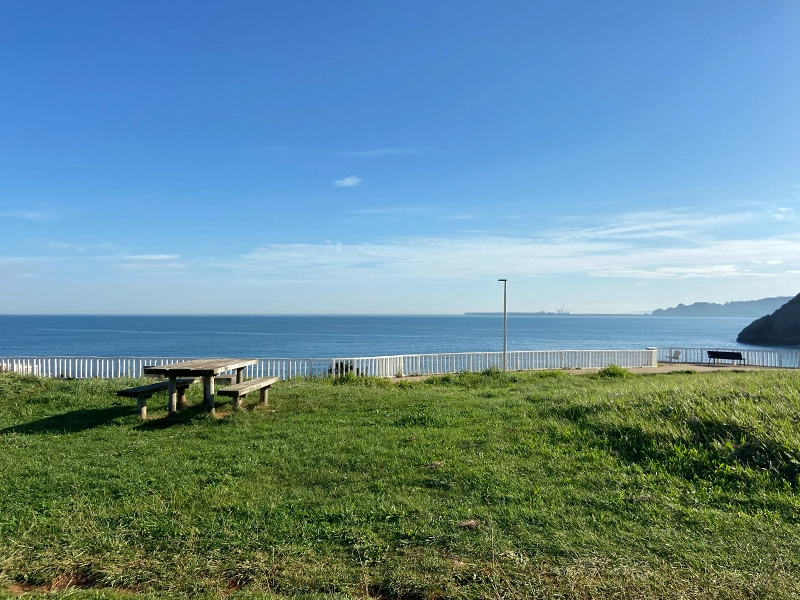
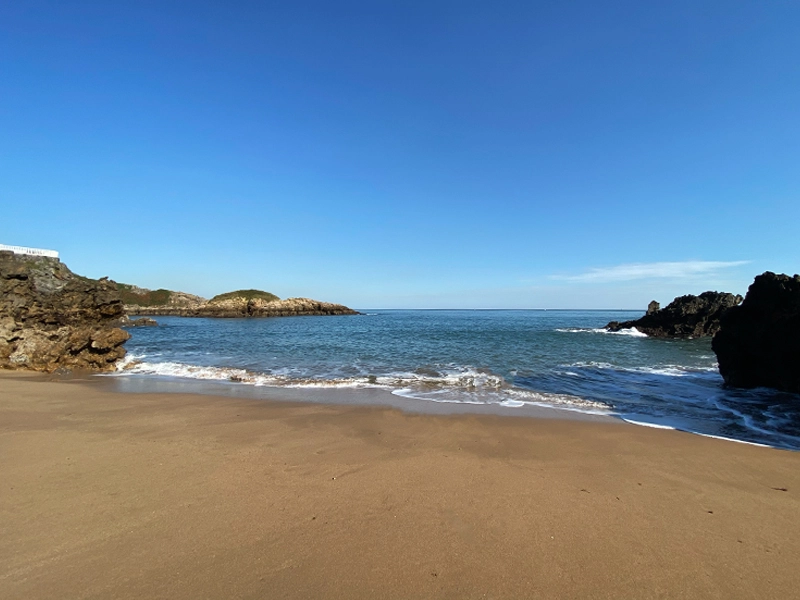
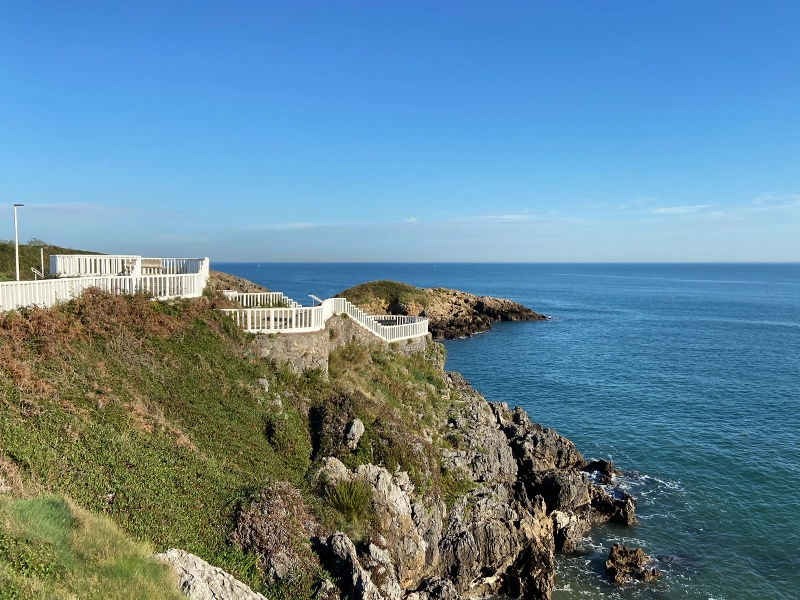
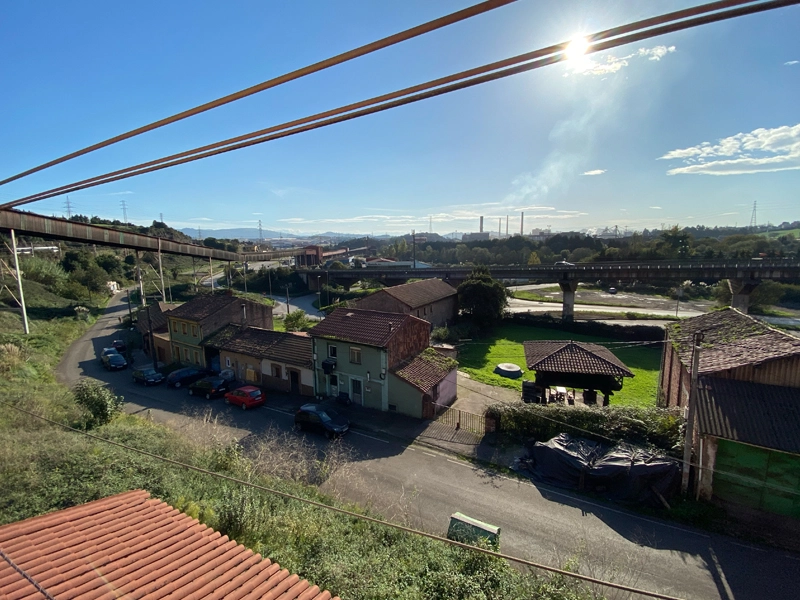
Galicia
Playa de Las Catedrales
On this beach, there are several stone arches, formed by the water steadily eroding the stone cliffs. At one point you can get a shot of three of those arches in a row, plus all the people who also want to take that one specific photo they came to this beach for, so you have to bring out your editing skills if you only want pristine nature in your shot.
This beach was very clean for the number of people who visit it every day even during shoulder season, although we did manage to get some parts of it to ourselves for a few minutes at a time, so I shouldn’t complain. I did get my shoes soaked through while standing on a rock (see below) when I didn’t move fast enough before a wave hit, so I will complain about that instead. 😉 When you go here by car: Bring a change of clothes. When the sun is out you’ll want to walk barefoot through the warm sand.

Restaurante Barrilete
While in Galicia I was told I had to try seafood. So we went to have seafood at the restaurant Barrilete. The menu was the most confusing one I have ever seen, with every dish listed in Spanish, English, German and French, but without any explanations and when you speak two of those languages sometimes they said two different things. We ended up ordering scallops, octopus and cod and shared them between us. They gave us half a sourdough bread to go with it, which was soft on the inside and crunchy on the outside. The food was delicious and I would definitely recommend splurging on it when you can afford it.



Faro de Isla Pancha
The Lighthouse of Pancha Island was my favourite lighthouse we visited along the coast. It is located at the west-most point of Galicia, right on the border to Asturias on a small island which you can reach by bridge from the coast. You can walk up to the lighthouse itself and lean against it while taking in the breathtaking views. When we were there the sun was shining over the land while dark clouds were gathering over the ocean.
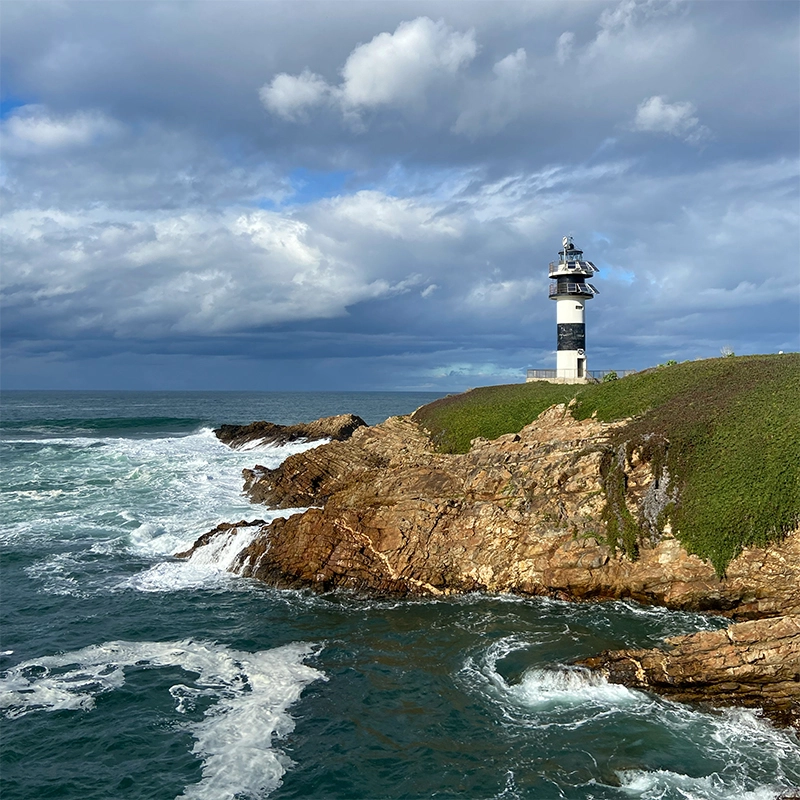

Asturian Food
I linked all of the mentioned foods in the map at the end of the blogpost.
Asturian Cider is made from 22 different kinds of apples from the region, which are juiced, fermented with yeasts and aged in wood barrels. It is poured in a specific way, with about 1,50m between the bottle and the glass, with the flow of the cider hitting the side of the glass to create the signature sparkle (and a sticky mess on the floor).
One of the brands of Asturian cider I tried is this one: Trabanco. It’s produced in Gijón, Asturias.
Fabada Asturiana is an Asturian bean stew. Other than white beans it typically consists of sausages (like chorizo and blood sausage), pork belly and lard.
Cachopo is the name of another Asturian meal. It’s made of two veal fillets, stuffed with ham and cheese, breaded and fried. It’s served with patatas fritas (fries).
I am not sure if this is a typical Asturian food, but at several cafés, they had a certain type of sandwich which you got if you just ordered “Un sandwich, por favor.” It has three layers of bread, with ham, fried egg, tomato, salad, cheese and mayo in between.
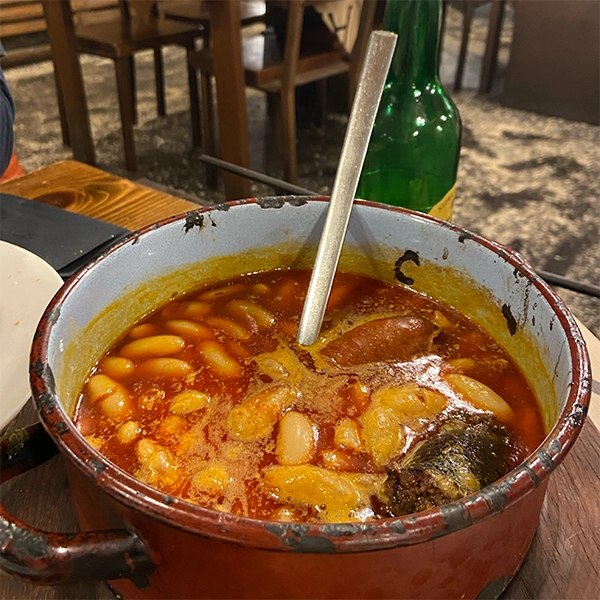
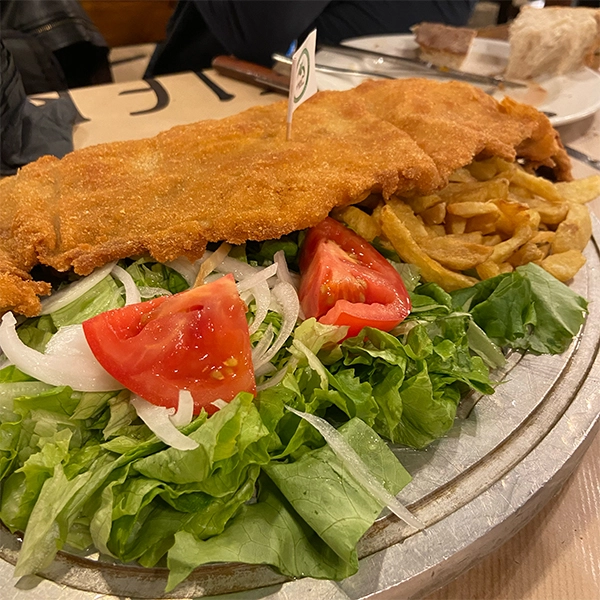

Visit Asturias – Map
How to read the map: Cities in general are light blue, beaches, forests and other nature spots are orange, churches and other religious monuments are purple, viewpoints are green, restaurants are red and museums are grey.
Zoom in on the cities to see the details, there are more than 35 points on this map!
You are currently viewing a placeholder content from Google Maps. To access the actual content, click the button below. Please note that doing so will share data with third-party providers.
More InformationHave you been to Asturias?
Did you visit Asturias, if so: any of these places or do you have any recommendations on something that should have been on my list? Leave me a comment! 🙂




